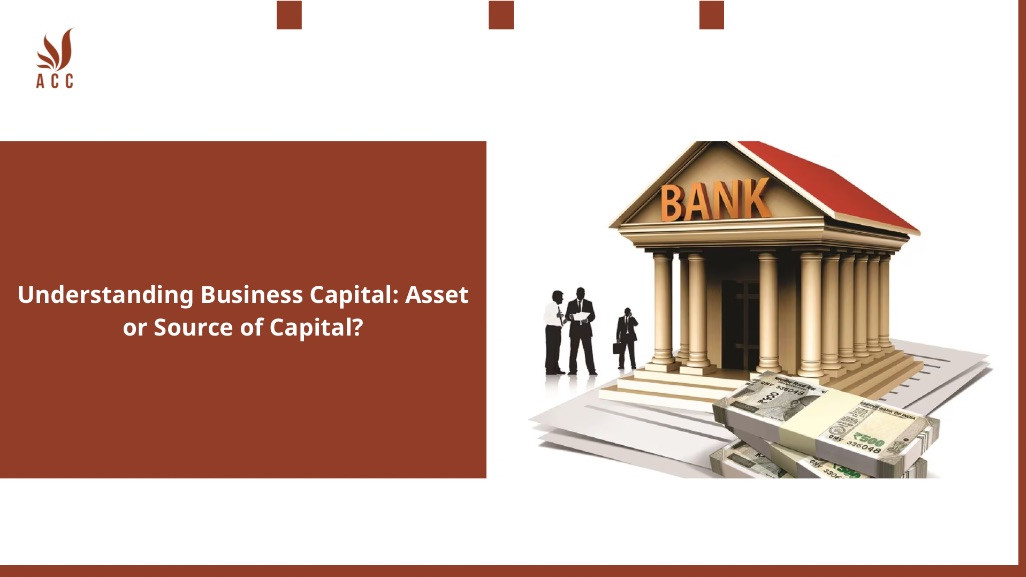
1. Understanding Business Capital: Asset or Source of Capital?
Capital is a broad term that can describe anything that confers value or benefit to its owners, such as a factory and its machinery, intellectual property like patents, or the financial assets of a business or an individual.
While money itself may be construed as capital, capital is more often associated with cash that is being put to work for productive or investment purposes. In general, capital is a critical component of running a business from day to day and financing its future growth.
Business capital may derive from the operations of the business or be raised from debt or equity financing. Common sources of capital include:
- Personal savings
- Friends and family
- Angel investors
- Venture capitalists (VC)
- Corporations
- Federal, state, or local governments
- Private loans
- Work or business operations
- Going public with an IPO
When budgeting, businesses of all kinds typically focus on three types of capital: working capital, equity capital, and debt capital. A business in the financial industry identifies trading capital as a fourth component.
2. Understanding Capital
From the economists' perspective, capital is key to the functioning of any unit, whether that unit is a family, a small business, a large corporation, or an entire economy.
Capital assets can be found on either the current or long-term portion of the balance sheet. These assets may include cash, cash equivalents, and marketable securities as well as manufacturing equipment, production facilities, and storage facilities.Capital is typically cash or liquid assets being held or obtained for expenditures. In a broader sense, the term may be expanded to include all of a company’s assets that have monetary value, such as its equipment, real estate, and inventory. But when it comes to budgeting, capital is cash flow.
In general, capital can be a measurement of wealth and also a resource that provides for increasing wealth through direct investment or capital project investments. Individuals hold capital and capital assets as part of their net worth. Companies have capital structures that include debt capital, equity capital, and working capital for daily expenditures.
How individuals and companies finance their working capital and invest their obtained capital is critical for their prosperity.
3. How Capital Is Used
Capital is used by companies to pay for the ongoing production of goods and services to create profit. Companies use their capital to invest in all kinds of things to create value. Labor and building expansions are two common areas of capital allocation. By investing capital, a business or individual seeks to earn a higher return than the capital's costs.
At the national and global levels, financial capital is analyzed by economists to understand how it is influencing economic growth. Economists watch several metrics of capital including personal income and personal consumption from the Commerce Department’s Personal Income and Outlays reports. Capital investment also can be found in the quarterly Gross Domestic Product report.
Typically, business capital and financial capital are judged from the perspective of a company’s capital structure. In the U.S., banks are required to hold a minimum amount of capital as a risk mitigation requirement (sometimes called economic capital) as directed by the central banks and banking regulations.
Other private companies are responsible for assessing their capital thresholds, capital assets, and capital needs for corporate investment. Most of the financial capital analysis for businesses is done by closely analyzing the balance sheet.
4. Business Capital Structure
A company’s balance sheet provides for metric analysis of a capital structure, which is split among assets, liabilities, and equity. The mix defines the structure.
Debt financing represents a cash capital asset that must be repaid over time through scheduled liabilities. Equity financing, meaning the sale of stock shares, provides cash capital that is also reported in the equity portion of the balance sheet. Debt capital typically comes with lower rates of return and strict provisions for repayment.
Some of the key metrics for analyzing business capital are weighted average cost of capital, debt to equity, debt to capital, and return on equity.
5. Types of Capital
Below are the top four types of capital that businesses focus on in more detail
Debt Capital
A business can acquire capital by borrowing. This is debt capital, and it can be obtained through private or government sources. For established companies, this most often means borrowing from banks and other financial institutions or issuing bonds. For small businesses starting on a shoestring, sources of capital may include friends and family, online lenders, credit card companies, and federal loan programs.
6. Why should professionals use ACC Law Firm's capital Service?
-
Expertise in Legal Matters: ACC Law Firm specializes in legal services, providing professionals with access to experienced attorneys who can offer valuable legal guidance. Whether it's contract negotiations, intellectual property issues, employment matters, or any other legal concern, their expertise can be invaluable.
-
Tailored Legal Solutions: ACC Law Firm understands that every professional's needs are unique. They can customize their legal services to address the specific challenges and opportunities faced by professionals in different fields.
-
Risk Mitigation: Legal issues can pose significant risks to professionals and their businesses. ACC Law Firm can help identify and mitigate these risks, reducing the potential for costly legal disputes or compliance issues.
-
Resource Optimization: Professionals can save time and resources by outsourcing their legal needs to ACC Law Firm. This allows them to focus on their core competencies and business objectives, while leaving legal matters in the hands of professionals.
-
Access to a Network: ACC Law Firm may have a network of legal experts and professionals in various fields, which can be beneficial for clients seeking connections and advice beyond just legal services.
Q&A
Question 1: Is business capital considered an asset on a company's balance sheet?
Answer 1: Yes, business capital is considered an asset on a company's balance sheet. It represents the resources or funds available to the business for its operations and investments.
Question 2: Can business capital also be considered a source of capital?
Answer 2: Yes, business capital can be considered a source of capital. It's the initial funding or ongoing financial support that a business uses to operate and grow. Capital can come from various sources, including investors, loans, or profits generated by the business.
Question 3: How do assets and sources of capital differ in a business context?
Answer 3: Assets are what a business owns and are recorded on the balance sheet. They include capital, but also other items like property, equipment, and cash. Sources of capital, on the other hand, are where the funds come from, whether it's through equity (investors) or debt (loans).
Question 4: Can business capital be both an asset and a source of capital simultaneously?
Answer 4: Yes, business capital can serve a dual role. On the balance sheet, it's an asset representing the funds available to the business. Simultaneously, it can be a source of capital when the business uses that capital to finance its operations and growth. So, it functions as both an asset and a source of capital in different contexts.
Nội dung bài viết:






Bình luận